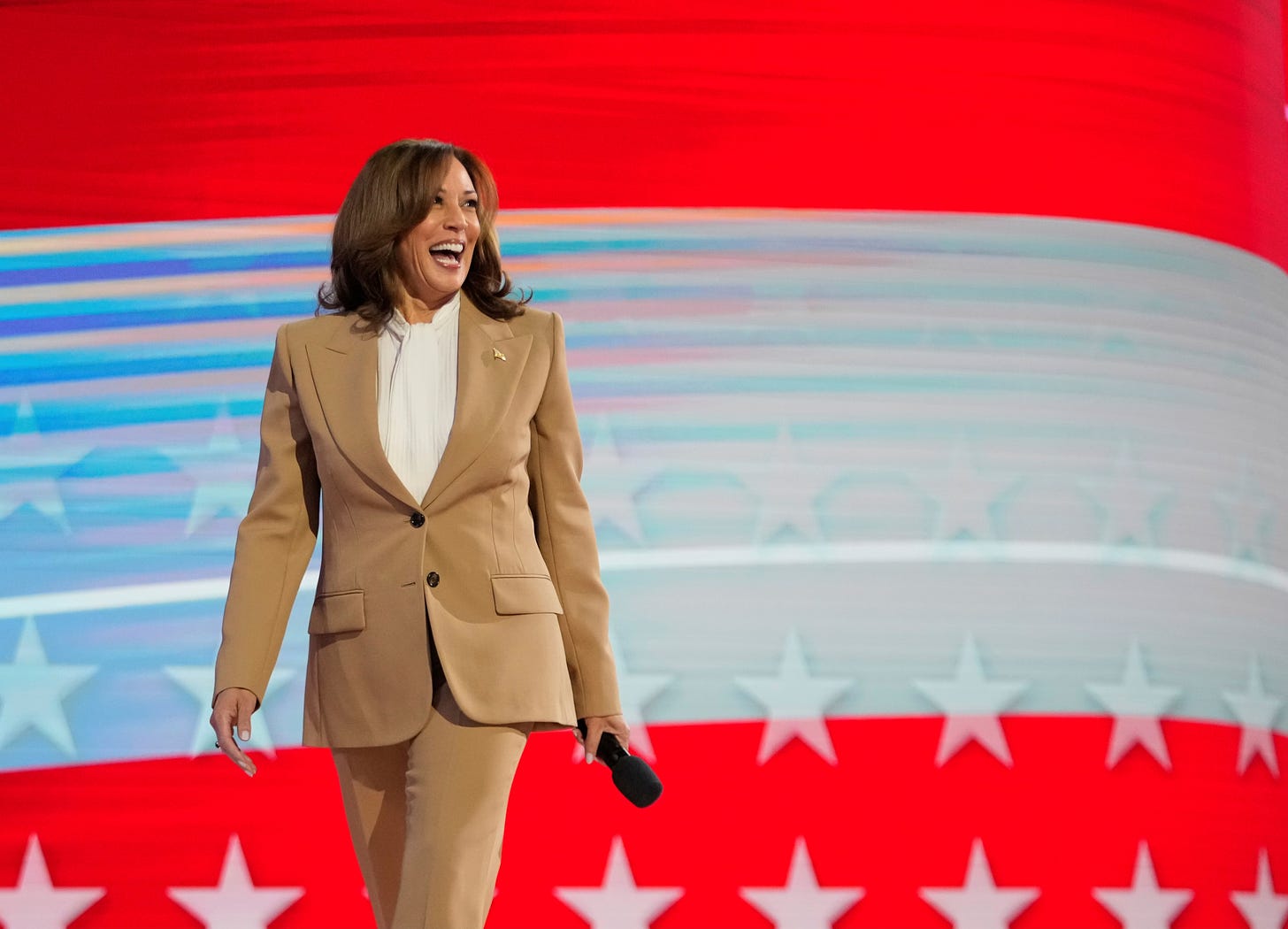What Is the "Convention Bounce"--and Why Do We Care?
In this short video, I discuss the significance and recent history of a data point that might, or might not, matter
Vice President Kamala Harris takes the stage at the Democratic National Convention on August 19, 2024. Photo credit: Sir.David/Shutterstock
Since the close of the Democratic National Convention last Thursday night, political analysts have asked: will Vice President Kamala Harris’s poll numbers will reflect the enthusiasm shown by delegates over four nights? You might have heard a phrase—”convention bounce”—being bandied about. You probably understand intuitively that it is a measure of the party’s, and a presidential candidate’s, success in presenting themselves to a national audience.
But what does it really signify?
We know that former President Donald J. Trump’s convention bounce was about a point: if you think this is negligible, you are right. Harris’s bounce is yet to be determined, but hte early news is positive. A Florida Atlantic University poll released today put it at a stunning 9 points, while pollster Nate Silver gave the Vice President a three-point bump before the DNC was over.
So it looks like Harris is doing well. But history shows that, while this captures the enthusiasm we all felt and saw from Democrats, the numbers are probably more modest going into the Labor Day weekend.
In a video below (available to paid subscribers only), I discuss the longer history of the convention bounce, what we should expect as the polling settles down in a few days, and how we might want to think about the data that toys with our emotions.
Keep reading with a 7-day free trial
Subscribe to Political Junkie to keep reading this post and get 7 days of free access to the full post archives.




